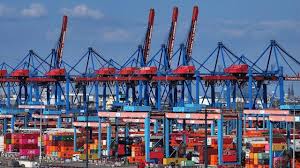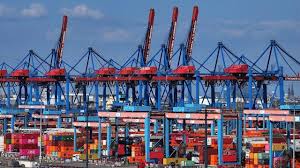EU’s domestic material consumption remained stable in 2022

Brussels: In 2022, the domestic material consumption of the EU economy remained relatively stable at around 14.5 tonnes per person, indicating a very slight increase of 0.4% compared with 2021 (14.4 tonnes per person).
Since 2000, the EU reduced its domestic consumption of material by 0.9 tonnes per person.
Non-metallic minerals accounted for more than half of the domestic material consumption (54%), biomass for almost a quarter (23%), fossil energy materials for close to a fifth (18%) and metal ores for 5%.
This article presents a handful of findings from the more detailed Statistics Explained articles on material flow accounts and resource productivity, resource productivity statistics and physical imports and exports.
In terms of the different materials that make domestic consumption, it’s important to analyse the importance of various materials, their potential for reuse, recovery or recycling, and their consumption trends.
The consumption of biomass remained fairly stable during this period, unlike the consumption of metal ores and non-metallic minerals, which were both highly influenced by the financial and economic crisis of 2008-2009 and by the measures taken in response to the COVID-19 pandemic. In 2022, the consumption of biomass materials fell to the lowest value since 2015 while metal ores also saw a decrease compared with 2021 but remained at a level similar to 2019.
As for non-metallic minerals, consumption has been increasing steadily since 2012, reaching its highest value in 2022, following a slowdown due to the pandemic.
Meanwhile, the consumption of fossil energy materials declined steadily over the past two decades, aligning with reduced CO2 emissions. However, after a significant drop in 2020 due to the COVID-19 pandemic, a rebound in consumption started in 2021 (5% from 2020 to 2021) and continued in 2022.
Domestic material consumption differed significantly among the EU members in 2022. While the levels of material consumption were below or equal to 10 tonnes per person in Spain (8.8), Italy (9.1), and the Netherlands (10.0), other EU countries stood out as high consumers, notably Finland (43.7), but also Romania (28.8), and Estonia (27.7).
Domestic material consumption in each country is influenced by natural endowments with material resources, which may form an important structural element of each economy.
Furthermore, consumption of the main material categories also varied across EU countries.
In 2022, consumption of non-metallic minerals ranged from 1.6 tonnes per person in the Netherlands to 28.8 tonnes per person in Finland. Further low levels were registered in Spain (4.2) and Italy (4.4), while high consumption values were also recorded in Romania (23.3) and Estonia (15.5).
Cross-country differences can be a result of varied levels of construction activities (investments), population densities and sizes of transport infrastructures, such as road networks.
Biomass consumption varied from 1.1 tonnes per person in Malta to 7.5 tonnes per person in Ireland. Economies with high biomass consumption are often specialised in certain livestock production (Ireland 7.5, Denmark 7.4) or timber production (Finland 6.9).
Consumption of fossil energy material varied from one tonne per person in Latvia to 6.9 tonnes per person in Estonia.
Metal ores consumption ranged from as low as 0.1 tonnes per person in Latvia to around 5.8 tonnes per person in Sweden.





